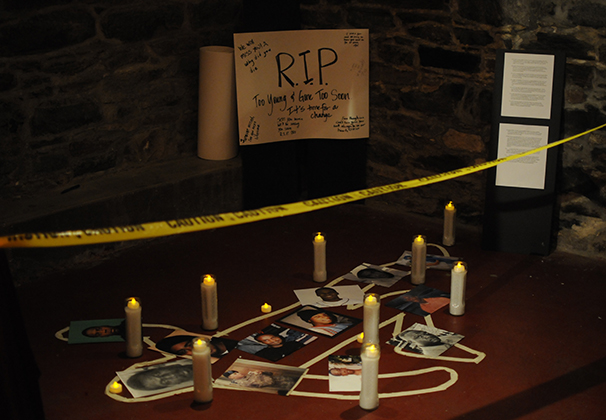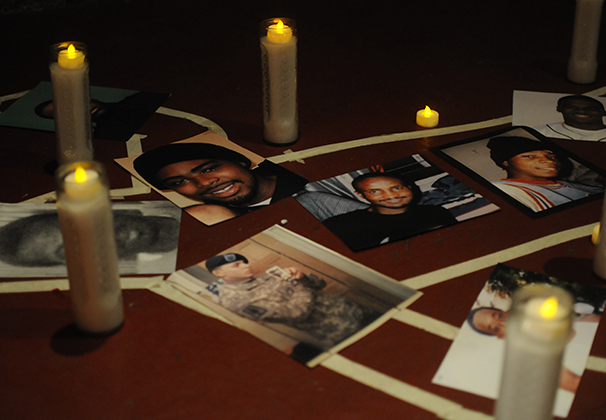
High school students and college students from three organizations, Make the Road New York, Urban Arts Partnership and LatinoJustice, held a multimedia pop up exhibit called “More Than a Quota: Our Experience, Our Story” at the SoHo Arthouse. The interactive exhibit, which explored the effects of the stop-and-frisk policy on students in New York City, kicked off on Tuesday night and will be open until Thursday. The HIVE NYC Learning Network funded the exhibit.
Adi Pimentel, lead police accountability organizer at Make the Road New York, said the event was a way for the students to interactively express their feelings on stop-and-frisk and allow the community to hear their voices.
“I think it’s a good way to bring the community together to talk about these kinds of issues because everyone’s involved,” Pimentel said.
Pimentel said although the organizations are not focused on stop-and-frisk, they deal with students who are frequently affected.
“A big base of our young people are stopped, harassed [or] searched by police officers in their neighborhoods,” Pimentel said. “The story has to be told because there’s just too many to be a coincidence.”
“More Than a Quota” included documentaries, videos, photos, poems and cartoons created by students. The organizers provided information on how to respond if the police stop someone, and students compiled research to inform the audience of statistics related to stop-and-frisk.
Samielly Leon, a junior at Brooklyn College and one of the students who contributed to the exhibit, said the purpose was to give the audience an idea of the students’ personal experiences.
“We tried to portray what really happens when the wrong person gets stopped and frisked,” Leon said.

Another student involved in the exhibit, Medgar Evers College sophomore Keeshan Harley, said his experiences of being stopped and frisked by police made him challenge the practices of the NYPD.
“The three things you’re supposed to get from a police officer at any point in time are courtesy, professionalism and respect,” Harley said. “When you’re denied one of those three things, the police officer is not doing their job.”
Qendresa Kajtazaj, 23, lives in the Bronx and said she enjoyed the exhibit’s interactive qualities and how young people organized it.
“They should do this more often, but they should get more organizations involved,” Kajtazaj said. “They need to take it out there to the media to get more attention.”
Leon said he feels the way stop-and-frisk is being implemented is the problem, not the policy itself.
“It’s not pointless,” he said. “You can use it for safety, but just make it fair for everybody. I just think it’s not fair that they’re only targeting one certain group.”
But Pimentel said stop-and-frisk is a problem that needs to be solved.
“I think that stop-and-frisk itself is an unlawful practice,” she said. “A lot of young people come to me on a daily basis telling me [they have] been searched and questioned unlawfully. I think the only way to fix this is to have community involvement.”
A version of this article appeared in the Wednesday, Dec. 4 print edition. Ann Schmidt is a staff writer. Email her at [email protected].






















































































































































